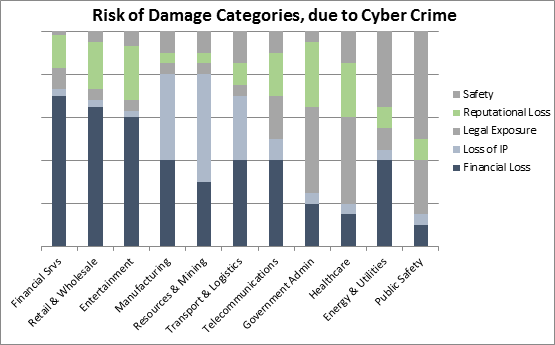NZ Organisations Must Make Security a Business Priority

IDC: NZ Organisations Must
Make Security a Business Priority and Follow
Through
Auckland, New Zealand, 22 September, 2014.
New Zealand organisations are at risk of taking their eye off the ball when it comes to IT security. As organisations evolve to information lead, information-centric business model the strategic importance of a strong security governance model is critical.
IDC New Zealand's latest Security Study, based on recent IDC end-user surveys, revealed that security is New Zealand organisations' leading strategic initiative to deploy by the end of 2015. However, when it comes to the specific technology investments, such as the 3rd Platform investment (cloud, mobile, social and big data), security is not even in the top 3 list of priorities.
The strongest intentions for security investment were detected in Retail/Wholesale, Financial, and Public sectors. From a business demographics point of view, the most intensive security adaptors are organisations with less than 100 seats and more than 1000.
"The mindset of kiwi CIOs is that security is perceived as a supportive, risk-managing initiative, rather than a primary solution for business goals. This is vastly different from both Australia and AP that place security as the top investment area across all new technology initiatives" says Donnie Krassiyenko, Market Analyst at IDC New Zealand.
It has been well communicated that there is a challenge for the CIO to become more strategic within the organisation. With only 60% of CIO's reporting to the CEO this is an opportunity to argue the need for a seat at the table.
"New Zealand organisations should ensure that someone at the leadership table carries the responsibility for information and security. This will force the attention and profile required to ensure that security is well considered in all technology investment decisions" adds Adam Dodds, Research Manager at IDC New Zealand. "Businesses and the CIO office are signalling a strong intent to work better together. This will be achieved through an alignment of a common language. Being able to articulate risks as they relate to revenue, IP, health and safety, brand, legal exposure and brand risk will provide a sense of perspective against physical and technical investments in security".
Therefore IDC advises that organisations should look to categorise the security risks relative to their impact to the business and the level of the risk represented, which differs across vertical industries as illustrated in the chart below. "Risk categorisation will help the security office to operate within predictable budgets and, thus, to meet expectations of the executive office", concludes Krassiyenko.
As a result IDC recommends to follow these simple steps for CIOs and IT managers to take control of their organisations' IT security:
• Set up good configuration with 100% visibility to understand the attack surface. Risks must be prioritised to be adequately addressed relative to the organisation industry risk profile.
• Establish and anchor a security budget that includes contingency funds as part of the IT strategy. Selling it to executives as an ongoing asset risk management initiative will be critical.
• Choose a security vendor based not only on its track record, but also on its security capabilities and risk management expertise.


 Bill Bennett: Download Weekly - How would NZ telecoms cope with another cyclone
Bill Bennett: Download Weekly - How would NZ telecoms cope with another cyclone NZ On Air: Firm Audience Favourites Lead NZ On Air Non-Fiction Funding
NZ On Air: Firm Audience Favourites Lead NZ On Air Non-Fiction Funding Insurance and Financial Services Ombudsman: Woman Gets $40k More After Disputing Insurer’s Decision
Insurance and Financial Services Ombudsman: Woman Gets $40k More After Disputing Insurer’s Decision BNZ: A Quarter Of Older NZers Fear Going Online Due To Scam Concerns
BNZ: A Quarter Of Older NZers Fear Going Online Due To Scam Concerns University of Auckland: Scientists Develop Tool To Monitor Coastal Erosion In Fine Detail
University of Auckland: Scientists Develop Tool To Monitor Coastal Erosion In Fine Detail Oji Fibre Solutions: OjiFS Proposes To Discontinue Paper Production At Kinleith Mill
Oji Fibre Solutions: OjiFS Proposes To Discontinue Paper Production At Kinleith Mill



